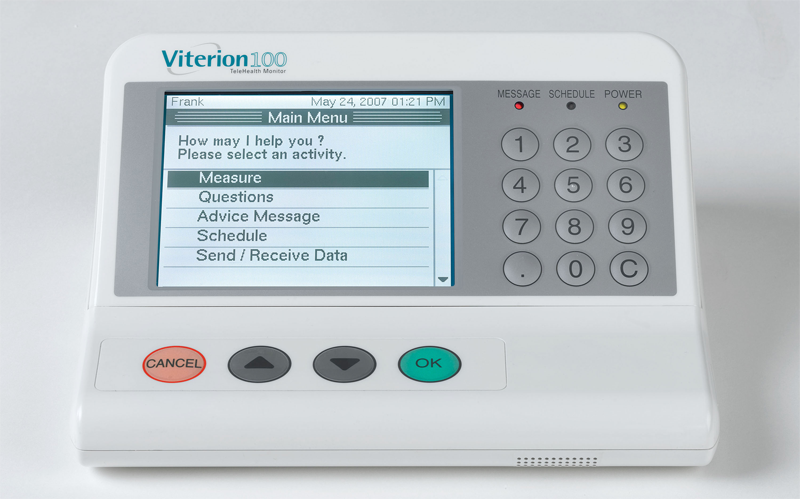Patient Summit USA
Understand the patient journey to build better adherence and engagement platforms
Telehealth – A Cost-Effective and Efficient Option for Patient Support
Matthew Wood talks to Rick Kates, Global Head of Viterion Telehealthcare, a Bayer subsidiary about how telecommunications continues to offer potential for innovation in healthcare, and how a properly realized telehealth strategy can positively affect patient support.

The healthcare system is under growing pressure to serve an ever-increasing population of patients, paralleled with an increasing complexity in managing these patients. The world is always open for suggestions, and at eyeforpharma we are constantly on the lookout for ways in which the pharma industry can work towards improving the overall patient experience.
“It’s about keeping people out of hospital and managing patients effectively.”
As a market leader in telehealth, Viterion has lent its voice to explain what can be done to manage the large-scale patient dilemma. Global head of Viterion Telehealth Rick Kates was available for comment.
TELEHEALTH
Kates attributes the need for telehealth to the increasing ageing population, healthcare costs, and desire to give people a better quality of life by ageing at home rather than enduring potentially avoidable rehospitalizations, “It’s about keeping people out of hospital and managing patients effectively. Telehealth can facilitate the improved delivery of healthcare more efficiently by playing the role as another touchpoint for the patient and healthcare provider, and getting patients involved in the day to day monitoring of their conditions.”
As a technology, it can be delivered in a number of different ways such as hub devices which sit in a patient’s home using POTS (plain old telephone service) or cellularly. A web based backend allows healthcare professionals to monitor patients’ vital signs and also depending on the patient’s disease assign them certain schedules or calendars to take their vital signs and medications, as well as answer predetermined questions related to their chronic conditions. Through the backend application the clinician can also send patients customized or standard advice messages and reminders.
Simply put it is a bidirectional hub that runs with a cable or wireless device, connected to peripherals that include for example a scale, blood pressure monitor, or blood glucose monitors, depending on the disease.
WHAT’S IN IT FOR THE PATIENTS?
The key concept to bear in mind, which is always relevant in the pharma context, is the automatic transmission of information. In this instance the patient takes vital signs, answers questions and information will automatically upload into the backend.
A growing number of homes around the world are dispensing with their landlines so cellular technology is becoming more pervasive. Other platforms can deliver telehealth such as smartphones, laptops or tablets, so there are different ways to manage information and make information available depending on the patient.
Healthcare professionals using such technology can assign a patient Disease Management Protocols (based on clinical practice guidelines: questions about diet etc, based on the disease). For example a telehealth hub will chime at 8am and will ask the patient to check their blood sugar, weigh themself and be asked a series of questions, which will vary and change on a daily basis.
If anything is out of place the clinician is able to see if there is any need for intervention, which could include messages saying “watch what you’re eating” or “exercise more” etc…
This is crucial to patients’ adherence and compliance to their medication because they are constantly reminded and can be routinely provided with encouragement.
As technology and innovation become better defined, so seems it the case in medical advancements. Kates adds that backend software has extraordinary flexibility for it to be customized and personalized for a patient or patient population.
FINAL THOUGHTS
Upon asking if there on any limitations to telehealth, Kates cites the issue of reimbursement and the issue of who will pay for this. Where telehealth has had its greatest success thus far is within socialized healthcare systems like the UK and Canada. The Veterans Administration has the world’s largest telehealth program however within the US; but the VA payment model is different than for private citizens, “In some cases reimbursement is a challenge but is evolving and improving.”
“All of this data is coming from disparate places, so getting that data in the electronic medical record of the patient is a challenge.”
“Interoperability of systems and integration of data another is a challenge. All of this data is coming from disparate places, so getting that data in the electronic medical record of the patient is a challenge, but not a challenge exclusive to telehealth.”
Introducing telehealth or any new technology as a bolt-on solution to existing care models is likely to yield extra work and extra cost. The challenge is to use the technology as an opportunity to revisit and reshape how healthcare is delivered so that it benefits the overall system– payer, provider and patient.
In closing, this reporter queried the role of telehealth in a charitable context, “Providing charities with this kind of technology would depend less on the technology and more on the funding, and who is going to pay for this,” said Kates, “The technology itself is a cost effective way if you consider the cost of hospitalisations and associated procedures.”
Kates sums up the entire concept briefly in saying, “It’s not a panacea or a cure for everything but if used effectively within an overall care model it’s a very useful tool. We’ve been able to demonstrate as an industry (and there are clinical studies to back this up) that with telehealth there are savings in cost, efficiencies and quality of life improvements.”
In terms of support, a patient can ask for little more.
Rick Kates will be presenting "Integrating a strong patient support infrastructure into your current patient programmes" at the 2013 Patient Summit USA. For more information on the event and our other speakers visit the official website.
Patient Summit USA
Understand the patient journey to build better adherence and engagement platforms
